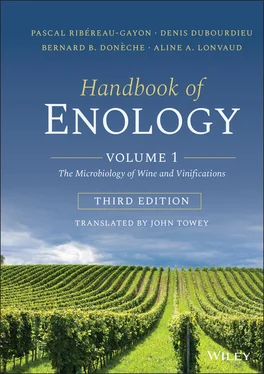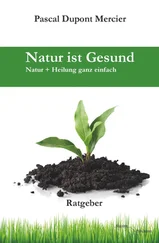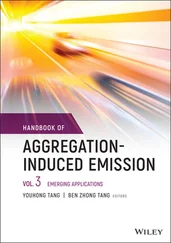152 Southern E. (1975) J. Biol. Chem., 98, 503.
153 Stratford M. (1994) Yeast, 10, 1741.
154 Tipper D.J. and Bostian K.A. (1984) Microbiol. Rev. 48, 2, 125.
155 Tredoux H.G., Kock J.L.F., Lategan P.L. and Muller H.B. (1987) Am. J. Enol. Vitic., 38, 161.
156 Tuite M.F. and Oliver S.G. (1991) Saccharomyces Biotechnology Handbooks. Plenum Press, New York, London.
157 Valero E., Cambon B., Schuller D., Casal M. and Dequin S. (2007) FEMS Yeast Res., 7, 317.
158 Van Vuuren H.J.J. and Jacobs C.J. (1992) Am. J. Enol. Vitic., 43, 2, 119.
159 Van Vuuren H.J.J. and Van Der Meer L. (1987) Am. J. Enol. Vitic., 38, 49.
160 Vaughan Martini A. and Martini A. (1987) Antonie Van Leeuwenhoek, 53, 77.
161 Vaughan Martini A. and Martini A. (1993) Syst. Appl. Microbiol., 16, 113.
162 Velázquez R., Zamora E., Alvarez M.L., Hernández L.M. and Ramírez M. (2015) Front. Microbiol., 3, 1222.
163 Versavaud A. (1994) Analyse de la diversité génétique de la microflore levurienne de la région des Charentes: application à la sélection de souches œnologiques, Thèse de Doctorat, Université de Nantes.
164 Versavaud A., Dulau L. and Hallet J.N. (1993) Rev. Fr. Oenol., 142, 20.
165 Versavaud A., Courcoux P., Roulland C., Dulau L. and Hallet J.N. (1995) Appl. Environ. Microbiol., 61, 10, 3521.
166 Vezhinet F., Blondin B. and Hallet J.N. (1990) Appl. Microbiol. Biotechechnol., 32, 568.
167 Vezhinet F., Hallet J.N., Valade M. and Poulard A. (1992) Am. J. Enol. Vitic., 43, 1, 83.
168 Wang S.A. and Bai F.Y. (2008) Int. J. Syst. Evol. Microbiol., 58, Pt 2, 510.
169 Williamson D.H. (1991) Nucleus, chromosomes and plasmids. In The Yeasts, Vol. 4: Yeast organelles,p. 433 (Eds A.H. Rose and J.S. Harrison). Academic Press, London.
170 Yarrow D. and Nakase T. (1975) Antonie Van Leeuwenhoek, 41, 81.
171 Young T.W. (1987) Killer yeasts. In The Yeasts,Vol. 2, Yeasts and the Environment, p. 131 (Eds A.H. Rose and J.S. Harrison). Academic Press, New York.
172 Zhang H., Richards K.D., Wilson S., Lee S.A., Sheehan H., Roncoroni M. and Gardner R.C. (2015) Front. Microbiol., 46, 92.
173 Zorg J., Kilian J. and Radler F. (1988) Arch. Microbiol., 149, 261.
174 Zott K., Miot‐Sertier C., Claisses O., Lonvaud‐Funel A. and Masneuf‐Pomarede I. (2008) Int. J. Food Microbiol., 125, 197.
175 Zott K., Claisse O., Lucas P., Coulon J., Lonvaud‐Funel A. and Masneuf‐Pomarede I. (2010) Food Microbiol., 27, 559.
CHAPTER 2 Yeast Metabolism
1 2.1Introduction
2 2.2Sugar Degradation Pathways
3 2.3Regulation of Sugar‐Utilizing Metabolic Pathways
4 2.4Metabolism of Nitrogen Compounds
The synthesis of living material is endergonic, requiring the consumption of energy. Chlorophyllous plants, called phototrophs, collect solar energy. Some bacteria obtain energy from the oxidation of minerals: they are chemolithotrophs. Like animals and most bacteria, fungi, including yeast, are chemoorganotrophs: they draw their necessary energy from the degradation of organic nutrients, which are their true “fuel.”
In a growing organism, energy produced by degradation reactions (catabolism) is transferred to the chain of synthesis reactions (anabolism). Conforming to the laws of thermodynamics, energy furnished by the degradation of a substrate is only partially converted into work; this is called free energy (the rest is dissipated in the form of heat). Part of this free energy can be used for transport, movement, or synthesis. In most cases, the free energy transporter particular to biological systems is adenosine triphosphate (ATP). This molecule is rich in energy because its triphosphate unit contains two phosphoanhydride bonds ( Figure 2.1). The hydrolysis of ATP into adenosine diphosphate (ADP) results in the liberation of a large quantity of free energy (7.3 kcal/mol). Biosynthesis and the active transport of metabolites make use of this free energy.

In this reaction, ∆G°′ is the change in free energy. ATP is thus considered to be “the universal currency of free energy in biological systems” (Stryer, 1992). In reality, microorganism growth or, in this case, yeast growth is directly related to the quantity of ATP furnished by the metabolic pathways used for degrading a substrate. It is very indirectly related to the quantity of substrate degraded.

FIGURE 2.1 Structure of adenosine triphosphate (ATP).
In the living cell, there are two processes that produce ATP: substrate‐level phosphorylation and oxidative phosphorylation. Both of these pathways exist in wine yeasts.
Substrate‐level phosphorylation can be either aerobic or anaerobic. During oxidation by electron loss, a phosphate ester bond is formed. It is a high‐energy bond between the oxidized carbon of the substrate and a molecule of inorganic phosphate. This bond is then transferred to the ADP by transphosphorylation, thus forming ATP. This process takes place during glycolysis ( Section 2.2.1).
Oxidative phosphorylation is an aerobic process. The production of ATP is linked to the transport of electrons to an oxygen molecule by the cytochrome respiratory chain. This oxygen molecule is the final acceptor of the electrons. These reactions occur in the mitochondria.
This chapter describes the principal biochemical reactions occurring during grape must fermentation by wine yeasts. It covers sugar metabolism, i.e. the biochemistry of alcoholic fermentation and nitrogen metabolism.
2.2 Sugar Degradation Pathways
Depending on aerobic conditions, yeast can degrade sugars using two metabolic pathways: alcoholic fermentation and respiration. These two processes begin in the same way, sharing the common trunk of glycolysis.
This series of reactions, transforming glucose into pyruvate with the formation of ATP, constitutes a quasi‐universal pathway in biological systems. The elucidation of the different steps of glycolysis is intimately associated with the birth of modern biochemistry. The starting point was the fortuitous discovery by Hans and Eduard Buchner (1897), of the fermentation of sucrose by an acellular yeast extract. Studying possible therapeutic applications for their yeast extracts, the Buchners discovered that the sugar used to preserve their yeast extract was rapidly fermented into alcohol. Several years later, Harden and Young demonstrated that inorganic phosphate must be added to acellular yeast extract to ensure a constant glucose fermentation rate. The depletion of inorganic phosphate during in vitro fermentation led them to believe that it was incorporated into a sugar phosphate. They also observed that the yeast extract activity was due to a nondialyzable component, denaturable by heat, and a thermostable dialyzable component. They named these two components “zymase” and “cozymase.” Today, zymase is known to be a series of enzymes, and cozymase is composed of their cofactors as well as metal ions and ATP. The complete description of glycolysis dates back to the 1940s, due in particular to the contributions of Embden, Meyerhof, and Neuberg. For that reason, glycolysis is often called the Embden–Meyerhof–Parnas pathway.
The transport of must hexoses (glucose and fructose) across the plasma membrane activates a complex system of protein transporters that is not fully explained ( Section 1.3.2). This mechanism facilitates the diffusion of must hexoses in the cytoplasm, where they are rapidly metabolized. Since solute moves in the direction of the concentration gradient, from the concentrated outer medium to the diluted inner medium, it is not an active transport system requiring energy. This is favorable from an energy standpoint.
Читать дальше














